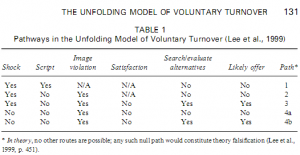The Different Ways People Handle Ethical Issues in the Workplace
According to a Gallup poll, only 21 percent of people characterized business executives as having “high” ethical standards—a little above lawyers (19 percent), but below bankers (28 percent) and journalists (28 percent). Whether that’s deserved or not, it’s nevertheless true that executives set the ethical tone at their companies. But employees have the power to improve it.
Employees encounter ethical dilemmas at work all the time. A manager is having an affair. A co-worker is spending company time contacting headhunters. A team member is using information acquired at a former job, despite having signed a noncompete agreement.
We all have an inner guide that knows the right thing to do. We just don’t always follow it. For some employees, the ability to act ethically is strong and feels very natural; others need practice sharpening their ethical sense and learning how to apply it better in real-life situations.
We tend to react to ethical situations in the workplace in a specific way, depending on our background, level of training, and personality. Here are the four ethical types I’ve found in my work:
The conformist
He is an employee who follows rules rather than questions authority figures. One might think this person could be counted on always to do the right thing. The conformist might look the other way, however, if a higher-up were acting unethically. After all, a manager is supposed to be obeyed. This person will run into work-related conflicts unless there are strict rules and well-defined consequences for not following them.
The negotiator
This is someone who tries to make up rules as he goes. When faced with a sketchy situation—say, a co-worker is drinking on her lunch hour—this person might wait to see if the behavior affects his job in any way, to see if the drinking gets any worse, or to see if anyone else notices. The negotiator will eventually encounter ethics-related trouble if he is required to exercise judgment without guidelines, because this person changes the rules according to what seems easiest at the time.
The navigator
He is someone who, when confronted with a situation in which people are behaving unethically, is able rely on an innate ethical sense to guide her actions, even if these decisions aren’t easy. This person has a sound moral compass, which provides the flexibility to make choices, even unpopular ones. The navigator’s ethical sense imbues her with qualities of leadership. Other people respect, and count on this person. The navigator will succeed in most organizations but will leave a company that is unethical.
The wiggler
He doesn’t give a lot of thought to what is right. Instead, this person takes the route that’s most advantageous to him. For example, he may lie to appease a supervisor. The wiggler is motivated by self-interest—getting on a manager’s good side or avoiding conflict. The wiggler will run into trouble when others sense that he dodges ethical issues to protect his own interests.
The good news is that your ethical type isn’t set in stone. There are tools you can use to become a more ethical employee and problem solver. With practice, you can make ethical decisions more easily, and more quickly see and follow the right path.
SOURCE: BusinessWeek




